Lomography Purple and Metropolis are two special films made to spice up our film photographer’s lives. The first one, Purple, can offer bizarre false color representations, somewhat reminiscent of color infrared film like the godfather Kodak Aerochrome. The second one, Metropolis, provides a cool desaturated look that takes you back in time. In this article, I’m going to report on my first experiences with the two fellas. It is one of these “subjective impressions rather than a scientific review”-pieces – you know the drill.
Introduction and Motivation
My girlfriend is a casual film photographer. She owns four or five point-and-shoot cameras and likes to try out specialty stocks from time to time. As her birthday drew closer this summer, I thought: “Why not surprise her with the two new-to-her films from Lomography, Purple and Metropolis?”. And, as these films were also new to me: why not surprise myself with a roll of each? I figured out that 35mm should be a good start as 36 frames provide more room for experimentation than a handful of 120 frames would allow. Consequently, four rolls of the magic stuff went into the virtual shopping cart.
Let’s talk specialty films! I find the use of them troublesome: as they are uncommon and concomitantly often expensive, I don’t want to squander them for “everyday subjects”. However, if I save them for really special occasions, there is a fair chance I am never gonna use them. “Is this day really specialty film-worthy? I don’t think so!” Different moods let me buy different exotics, which then share the same fate. Hence, the film compartment in our fridge gets enriched by all types of peculiar film stocks over time. Ask Karin Majoka where this behavior leads to!
Fortunately, curiosity won over procrastination here. For my summer vacation – actually a summer “staycation”, here at home in Hannover, Germany – I set myself the task to shoot them both, Lomography Purple and Metropolis. Discover common places with uncommon materials. To ease the pressure, I came up with a mantra: “All I want is to get familiar with these stocks and see if they are worth a bigger project. No need to create any kind of masterpiece here!”
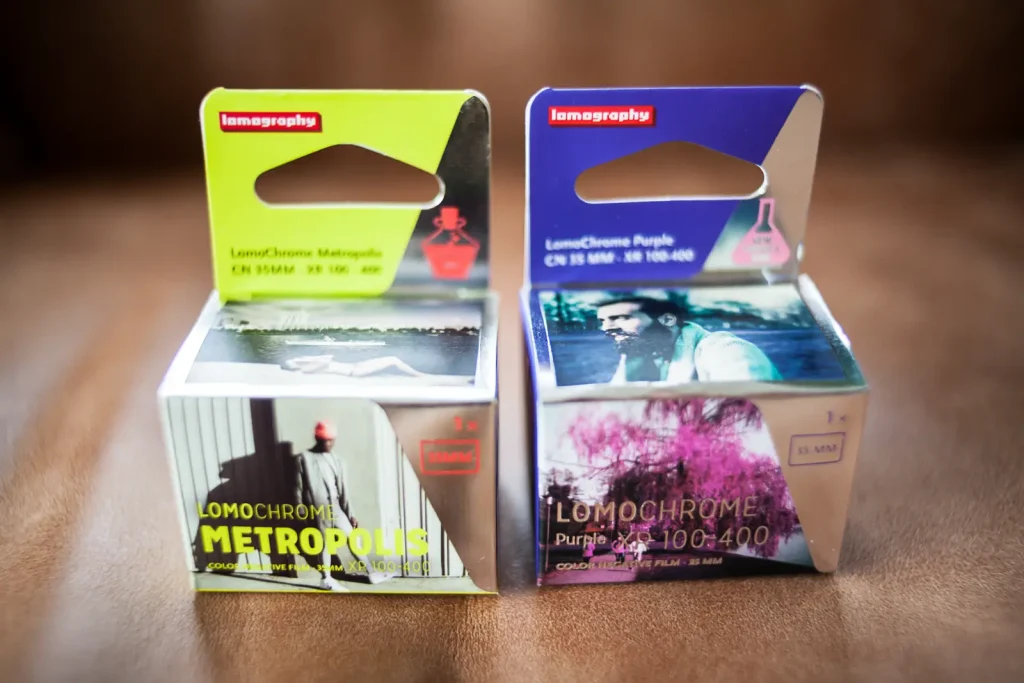
Choosing Subjects suitable for Lomography Purple and Metropolis
In the beginning I sat down and created a list with considerations useful for my plan:
- Familiar sceneries would be easier to assess than new ones. And if the execution failed, I wouldn’t get upset over having lost an exciting opportunity. So no “I have this once-in-a-lifetime trip to Japan and completely rely on this unknown film!”. (Added bonus: I would have a great excuse to take yet another photograph of my favorite subjects.)
- Architecture and cityscapes: static objects that would allow me a thought-through and unhurried approach. In the case of Lomography Metropolis, I would in particular look out for older brick buildings as I enjoyed images of these the most in my web research. Industrial plants would occupy the top of this list.
- Lomography Purple and Metropolis both offer variable ISO from 100 to 400 (that’s why they carry the “XR” designation for “extended range”). I would shoot them at a low exposure index around 100 for low grain as well as around 200, which is the films’ sweet spot according to some reviews. Two versions of each frame would provide me with direct comparisons – easier to judge later which setting I would prefer.
- To obtain a variety of light situations, I would shoot preferably during golden and blue hour. This time frame of the day could serve me with direct sunlight, mixed lighting situations as well as night scenes. Bonus: golden and blue hour both never fail to deliver exciting results.
- Finally: I would rely on a familiar camera with full manual controls, preferably an SLR.
Homework done. Let’s venture out in the field!
Shooting Lomography Metropolis
As I mentioned in the previous paragraph, I decided to photograph some architecture. So I chose my favored tool for this job: my Canon EOS 1N camera in combination with the 24mm shift lens – a versatile and capable piece of kit (yet a bit boring). Camera, lens and travel tripod are not overly heavy and (barely) fit into my rucksack, so getting around by bike is possible. Hence I could reach interesting places in my neighborhood as well as destinations further away in the countryside.
On the first trip with Lomography Metropolis inside my Canon’s belly I rode my bike to the ContiTech plant. This company is a subsidiary of car component manufacturer Continental, and one of the few active factories left in central Hannover. I directly headed to the site’s main entrance as this one corner always attracts my interest. See the second image below; I have photographed this view many, many times in the past years. During this evening I added a few more numbers to my imaginary counter since I took the same shot at four different stages of dusk.
What strikes me about the Metropolis is how desaturated the blue skies turned out. Even the intense post-sunset blue completely vanished and was rendered mid-grey. This should be a consequence of the rather generous exposure I granted the film. The more light it receives, the more faded the colors will look like, as for instance Ben pointed out in his “5 frames with” post. According to Hamish’s article on Metropolis in the Minolta Riva, you also should not underestimate the influence of the scanning process. By the way, my films were developed and scanned by Carmencita Film Lab in Spain.
Metropolis Images
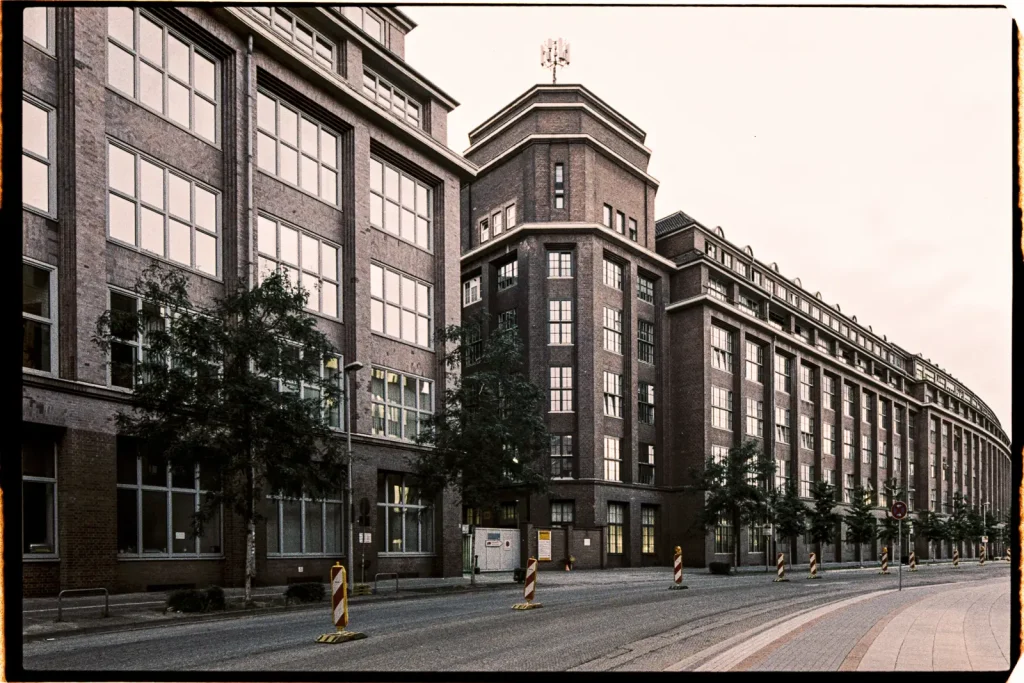
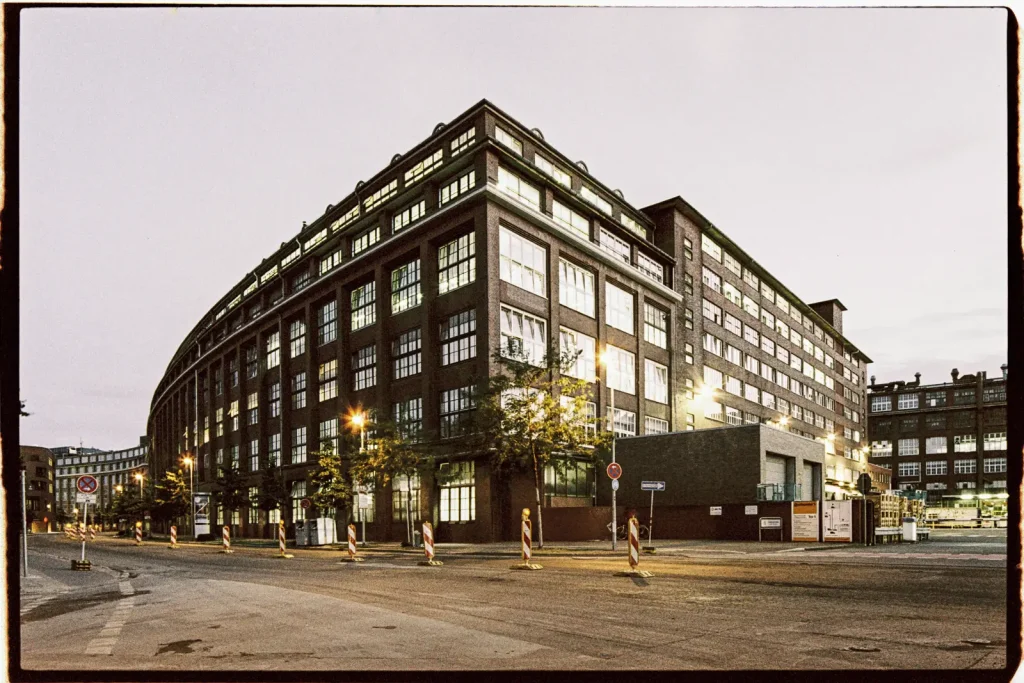
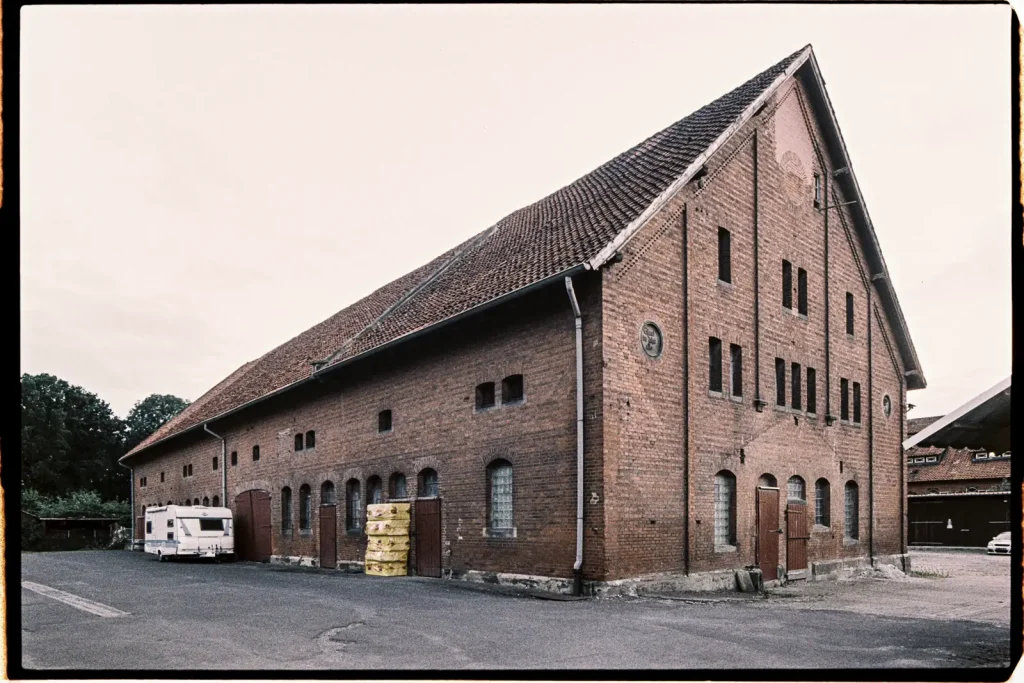
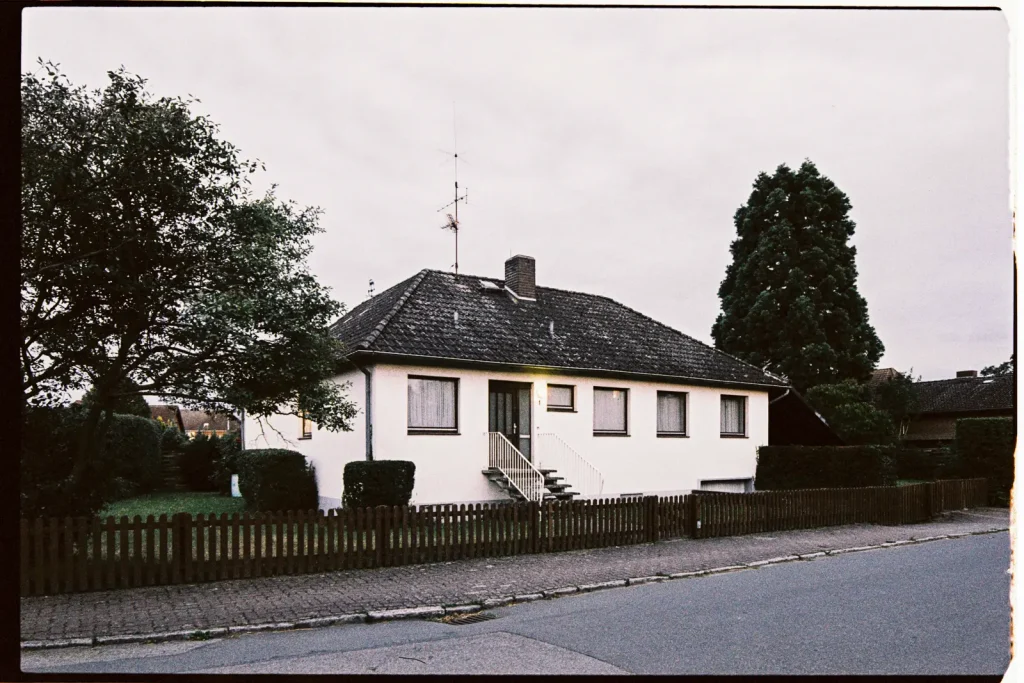
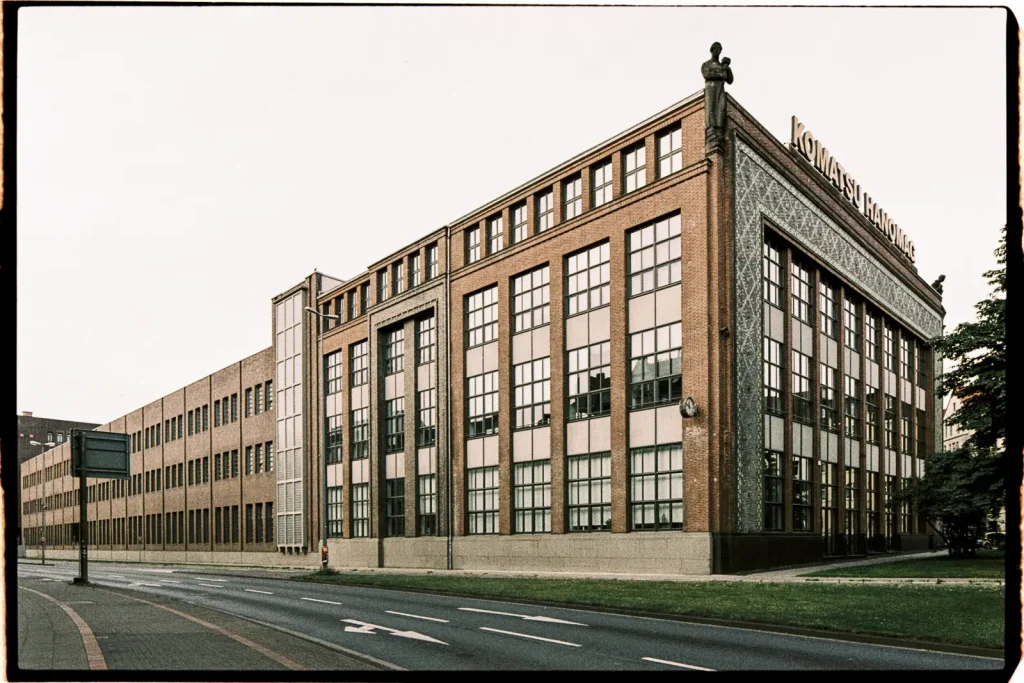
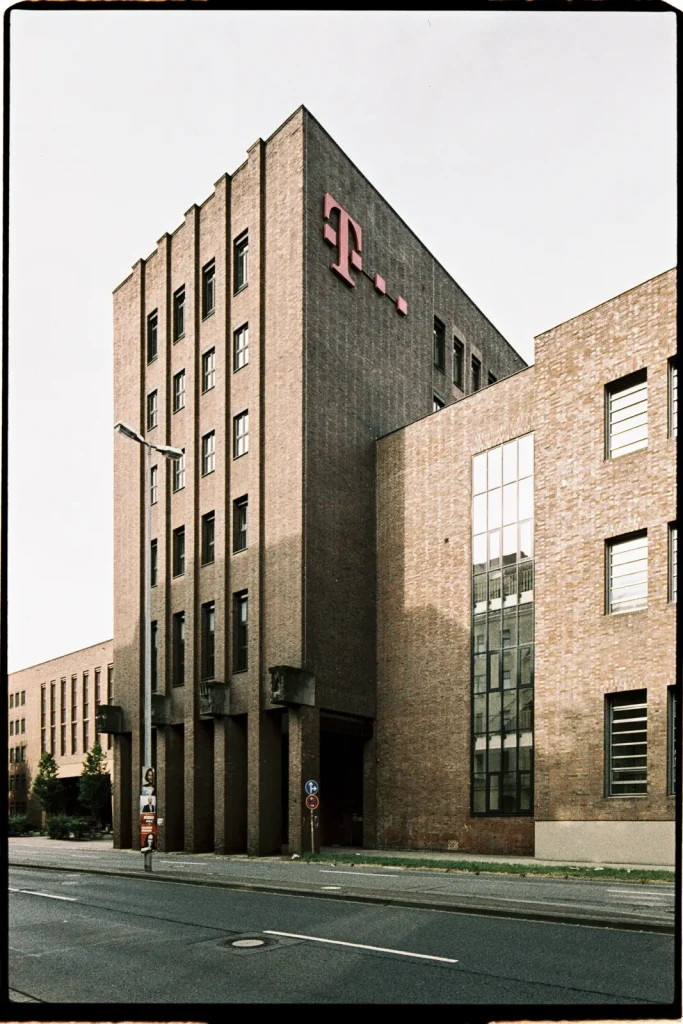
Shooting Lomography Purple
So, let’s go weird now! After I had finished the roll of Metropolis, I directly loaded the Purple. Unfortunately, I caught a period of very unstable weather. (Isn’t that what we all dream of for our holidays?) After three days of postponements, I finally set off.
Back in business I headed for the small village of Höver, which is dominated by the local cement works. Here, farmsteads and small houses stand close to huge silos and conveyor belt bridges. The image on top of this article shows the westerly entrance to the village, with the main road intersecting the plant. On this Friday evening, the whole village seemed a little spooky. Strangely, I didn’t see any people walking around and I couldn’t hear any children playing in the gardens. Nowhere in the air I would notice the subtle scent of a summerly barbecue. “Where have I ended up, in a ghost town?”
As expected from the reviews found online, Lomography Purple turned out as a surprise bag. Just look at my sample images. The film cannot offer the same fluffy pinkish-reddish vegetation we all love Kodak Aerochrome for. Though it provides a unique experience, unmatched by any other film currently available – at least to my knowledge. I think it shouldn’t compete against Aerochrome, we should rather understand Lomography Purple as a class of its own. Having said this, I was indeed happy with each single frame I got from this roll.
Purple Images
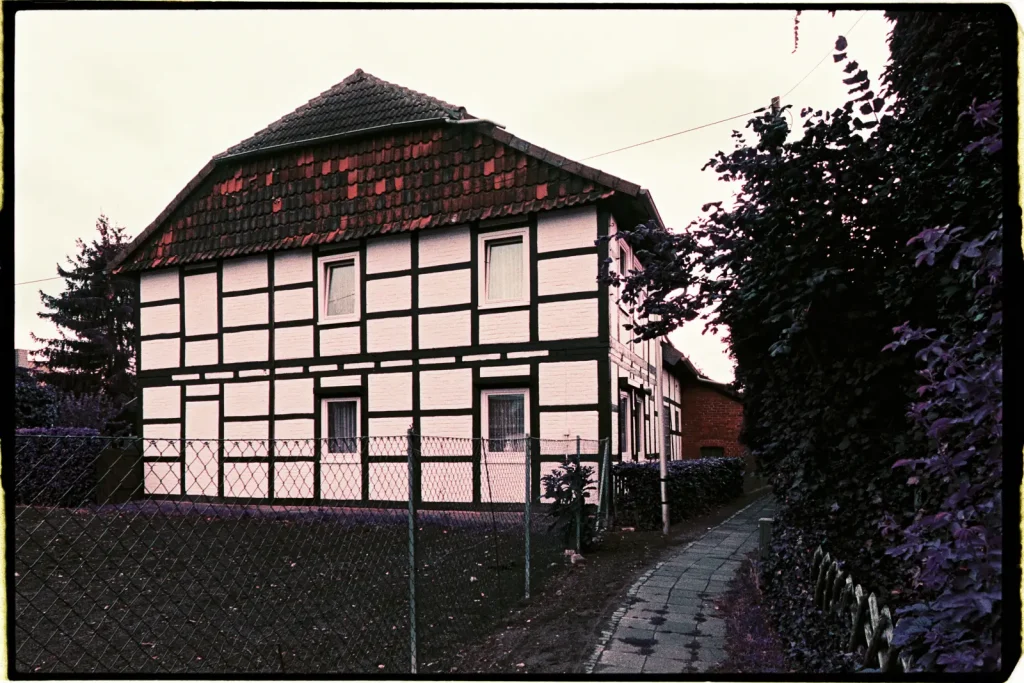
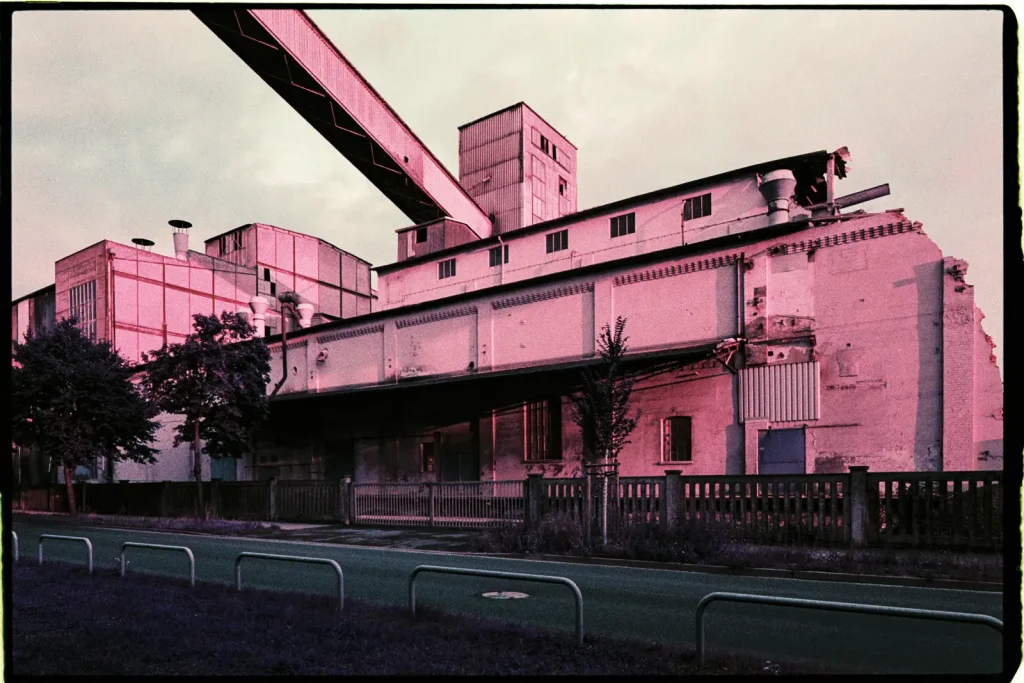
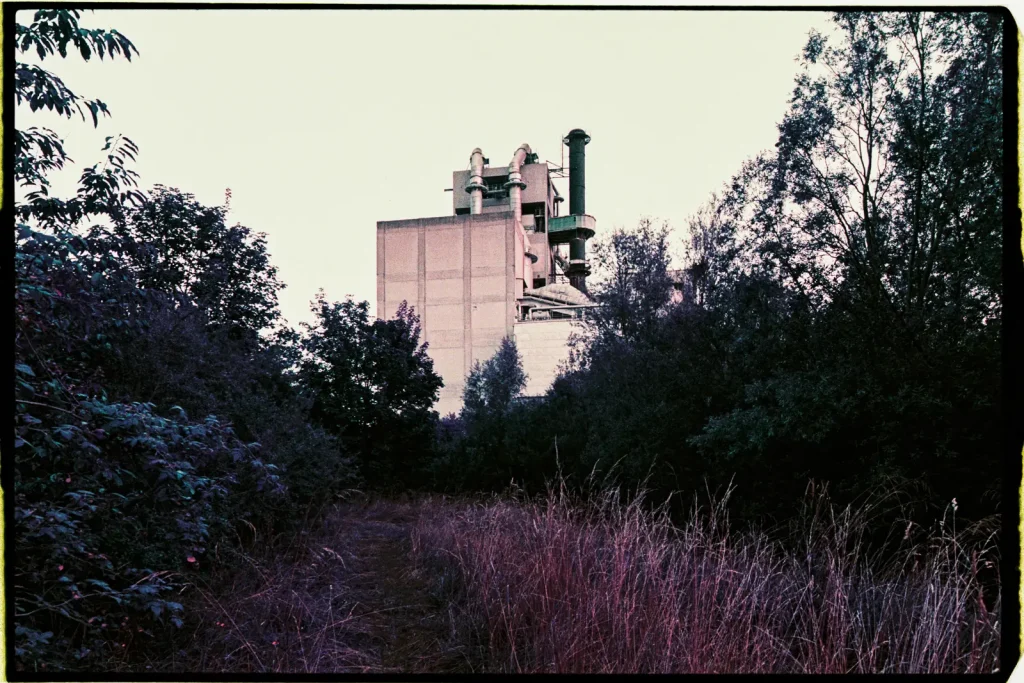
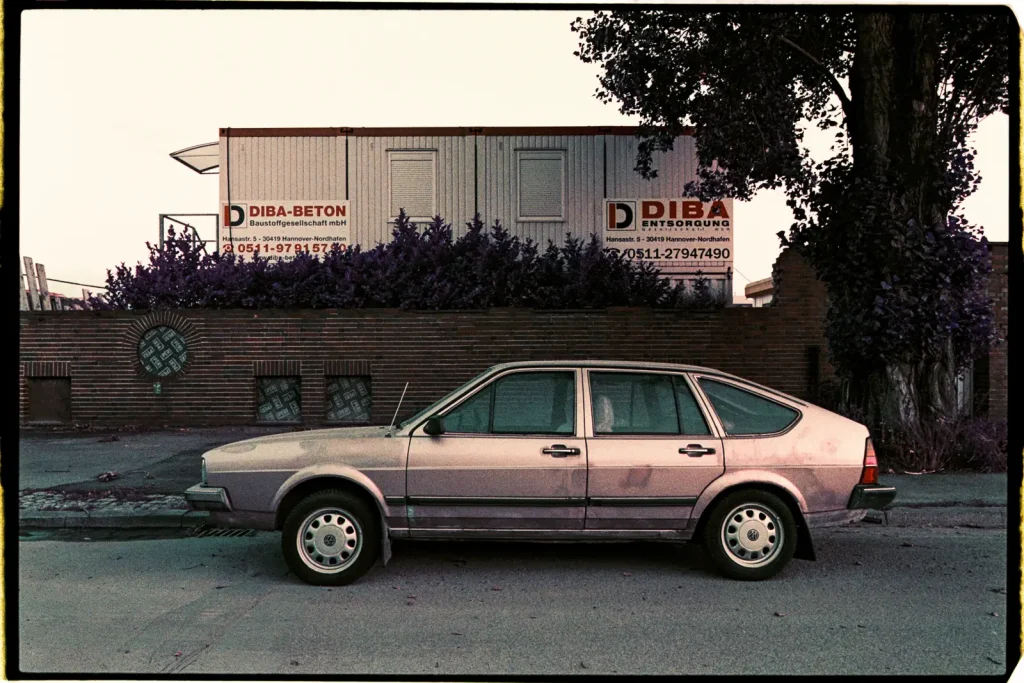
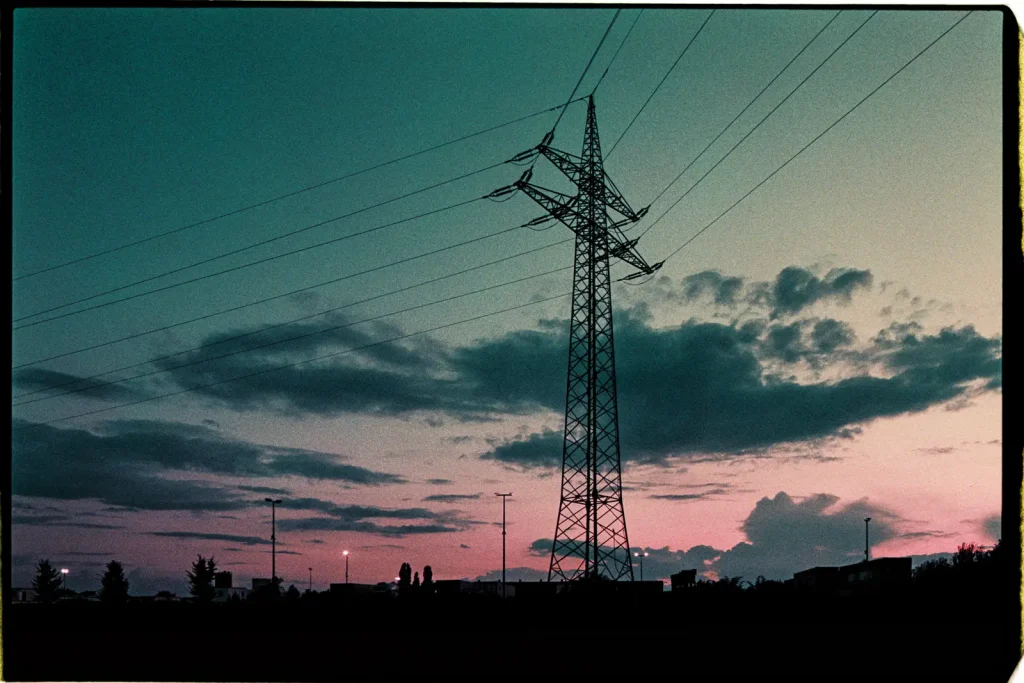
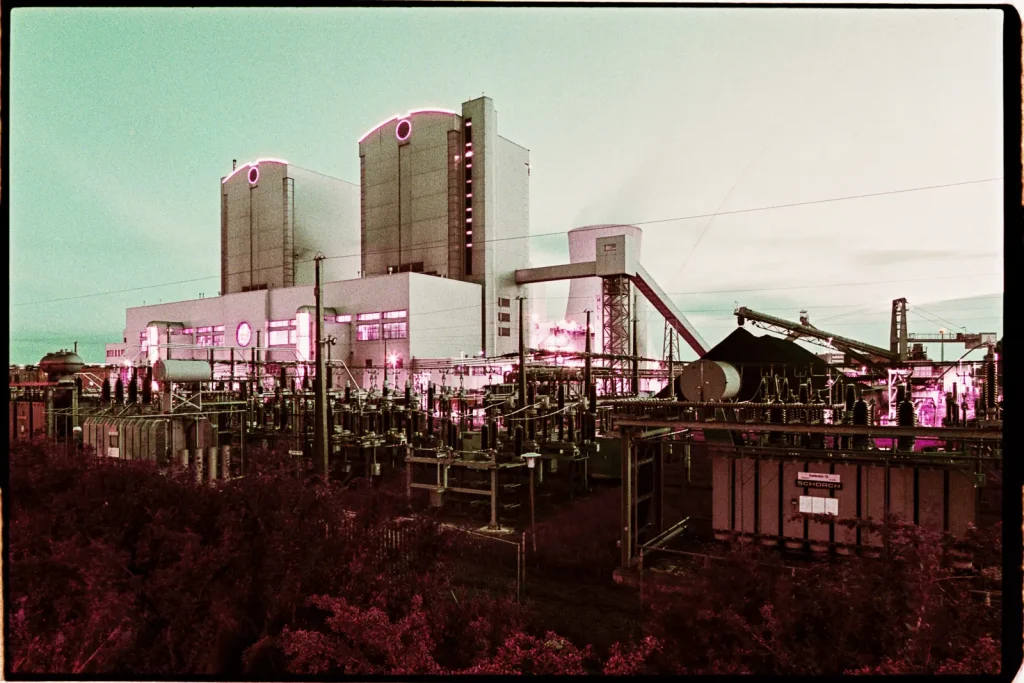
My Conclusions on Lomography Purple and Metropolis
Well, how do I feel about Lomography Purple and Metropolis now? They are both great films and I love them! In comparison, the effects of the Purple are way more pronounced and less predictable than the ones of the Metropolis. In both cases though I mostly preferred the longer exposed frames (EI 100 instead of 200).
The Metropolis provides me with a very distinctive look among other color film options. I like this look, as it reminds me sometimes of hand-colored black-and-white prints or the faded pages of an old magazine. In choosing the name “Metropolis”, the Greek word for a large city, Lomography made a wise decision. I think the film suits urban scenes very well – a bit like I could travel back in time and visit my hometown during the 1960s or 70s.
In contrast, the Purple offers an almost gamble-like experience as it is hard to foresee the results. Pink facades, deep purple foliage and turquoise skies – an unparalleled way to see the world. In my opinion, these weird effects make the Purple the more exciting choice among the two. As I am writing these lines, I have already ordered six more rolls – 35mm as well as 120 format – for further gambling.
Well, I hope this was helpful and inspiring to you. If you are interested in further projects dealing with architectural photography, please check out my previous posts here on 35mmc.
Thanks for reading!
Share this post:
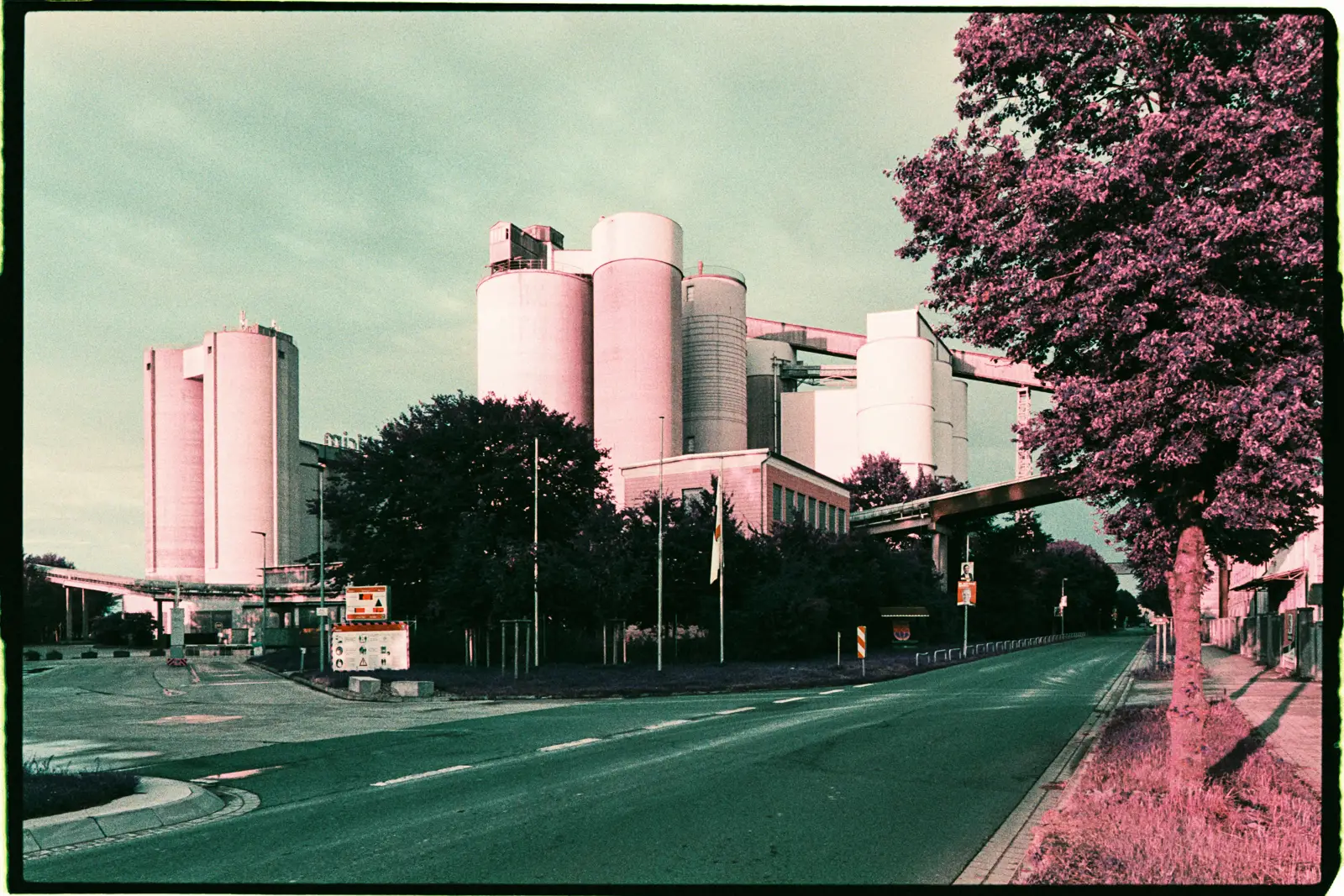








Comments
DeeDee Yelverton on Lomography Purple and Metropolis Films: Goin’ Weird – by Christian Schroeder
Comment posted: 17/09/2021
Peter Roberts on Lomography Purple and Metropolis Films: Goin’ Weird – by Christian Schroeder
Comment posted: 17/09/2021
You've rekindled my lust for a shift lens.
yuze on Lomography Purple and Metropolis Films: Goin’ Weird – by Christian Schroeder
Comment posted: 18/09/2021
Kodachromeguy on Lomography Purple and Metropolis Films: Goin’ Weird – by Christian Schroeder
Comment posted: 18/09/2021
You wrote, "Suburbia at dusk, tranquil yet a bit scary.". Come see me in the USA and I can show you some really scary suburbia.
Gavin Wong on Lomography Purple and Metropolis Films: Goin’ Weird – by Christian Schroeder
Comment posted: 20/09/2021